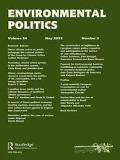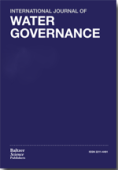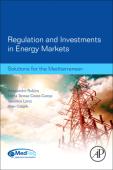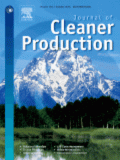This report provides the first progress assessment of climate actions launched at the 2014 UN Climate Summit in New York. It considers the distribution and performance of climate actions along multiple dimensions that are relevant to both mitigation and adaptation. While it is too early for a conclusive assessment of the effectiveness of climate actions, this study makes a first and indispensable step toward such an assessment. Initial findings are encouraging. One year after their launch, most climate actions have performed well in terms of producing outputs, putting them on track to implementing their commitments in the coming years.

The alleged capacity of Payment for Environmental Services (PES) to reach conservation policy goals, while reducing poverty in a cost-effective manner, makes it an extremely attractive development instrument for policymakers and international funding agencies. This article reconstructs the process of envisioning and building the National PES Strategy in Colombia. It reveals how this conservation policy has resulted from the mobilisation of the transnational/national PES epistemic community and its globally expanding discourse. The influential PES network generates internally defined standards of success that proceed without reference to empirical evidence as to the impacts of the implemented policies. PES adoption is influenced by regulatory instruments’ unsatisfactory outcomes, the ways in which market-environmentalist models induce profound indifference towards on-the-ground policy impacts, the discursive power and alignment properties of the PES policy epistemic community, and financial and political pressures by international banks and environmental NGOs.

The Coruh/Chorokhi river system is of great economic importance to both Turkey and Georgia because of its largely undeveloped but economically exploitable potential for hydropower. On both sides of the border a large number of hydropower projects are being implemented unilaterally in which private investors play the key role, following liberalisation of the energy sectors in Turkey and Georgia. This has been promoted in both countries, despite the resulting social and environmental costs, particularly in Turkey.
Negative effects – i.e., the changes in sedimentation and the river flow regimes – moving from upstream interventions in Turkey to downstream Georgia – have still not been resolved, and they will put electricity generation in Georgia at risk when the hydroelectricity plants start operating. This article explores regional disputes and the degree of cooperation that exists, and analyses the effect that the efforts of relevant actors to establish regional electricity trading are having on the current problems. The creation of a regional electricity market seems to be opening up a new avenue for cooperation also on water.

While initial steps have been taken to diversify the energy mix in North Africa, large-scale deployment of renewable energy technologies and a transformation of the energy sector are lagging behind. This chapter argues that a systemic approach is essential for scaling up renewables, as piecemeal measures are not likely to capture the full range of expected outcomes. Systematic learning should be at the core of policy-making with a view to capturing long-term benefits, as well as an effort to coordinate across development agendas and foster alliances between stakeholders with diverse interests in the energy sector and beyond. Ultimately, a new narrative that discredits the “old” energy regime and sheds light on the cobenefits of pursuing an integrated approach to green growth and energy sector transformation is needed.

High upfront costs and investment risks constitute critical barriers for investments in low-carbon infrastructure technologies in the Middle East and North Africa. This article uses a case study of Morocco's solar strategy for the electricity sector in order to explore how domestic versus regional/multilateral governance structures impact upon the downside risk of clean energy investments and translate into lower financing costs. The authors firstly process-trace the differential effects of governance on policy and financial de-risking, intended as risk reduction and risk transfer. Then they quantify the impact of policy and financial de-risking on the financing costs of the Ouarzazate CSP Noor 1 project.
